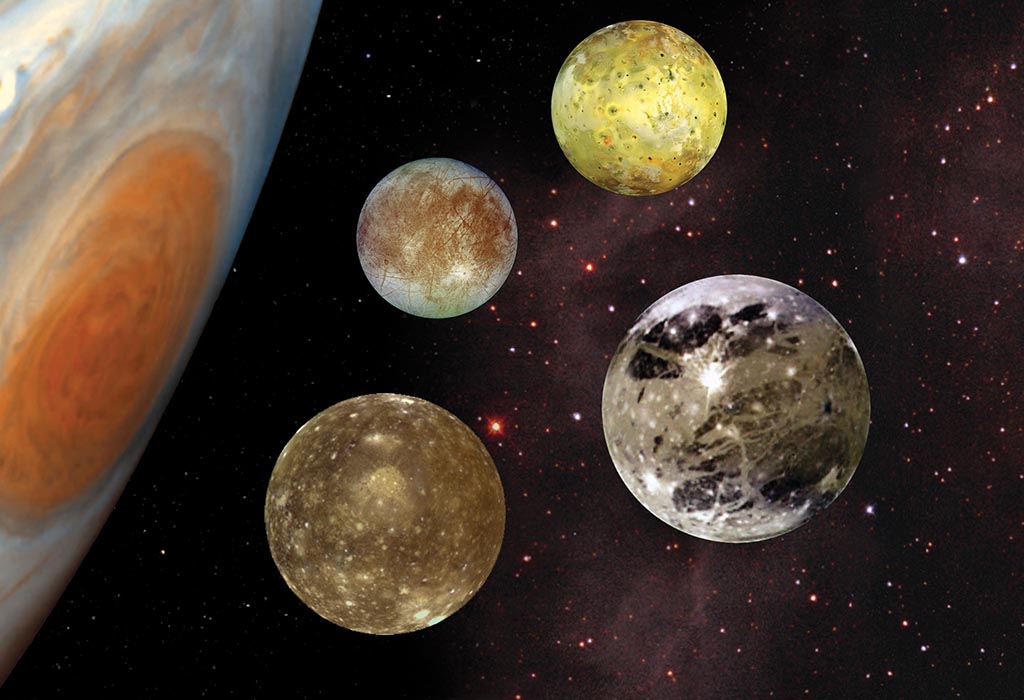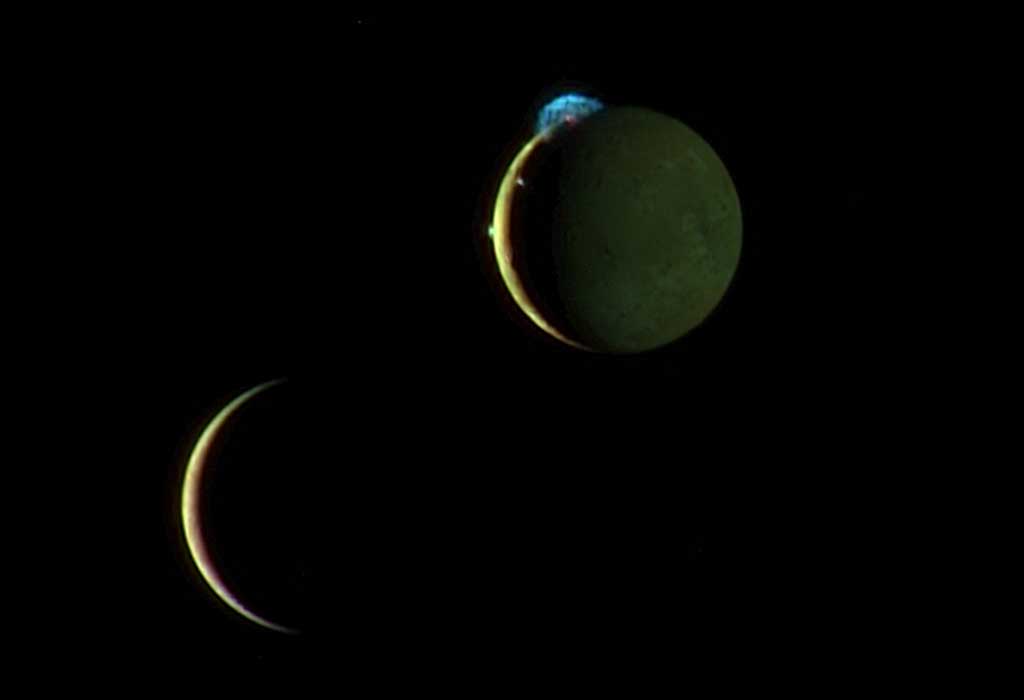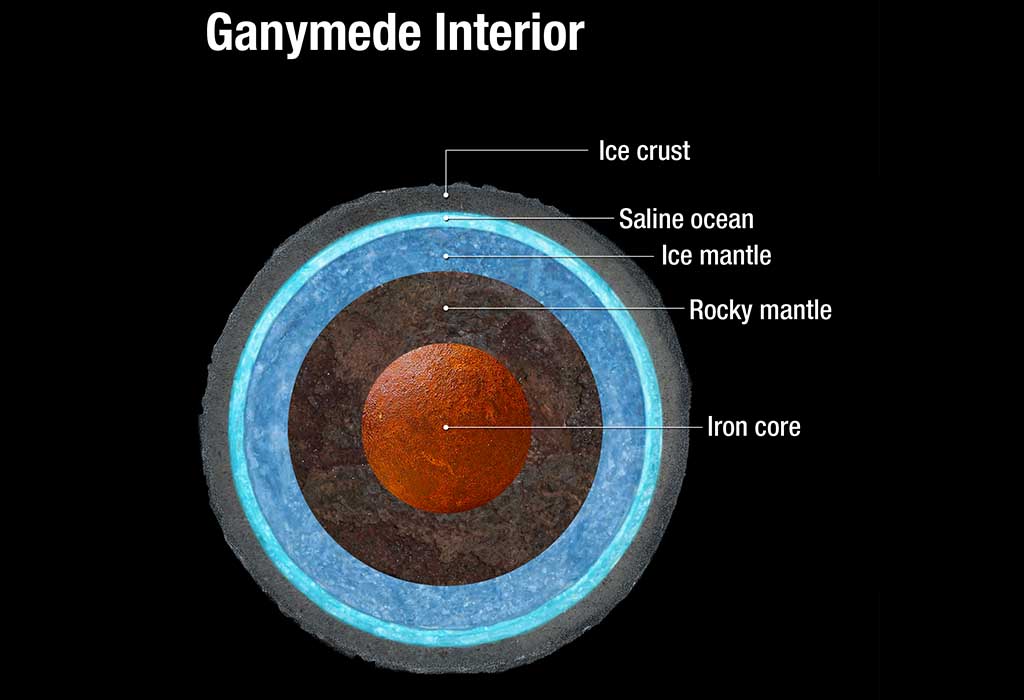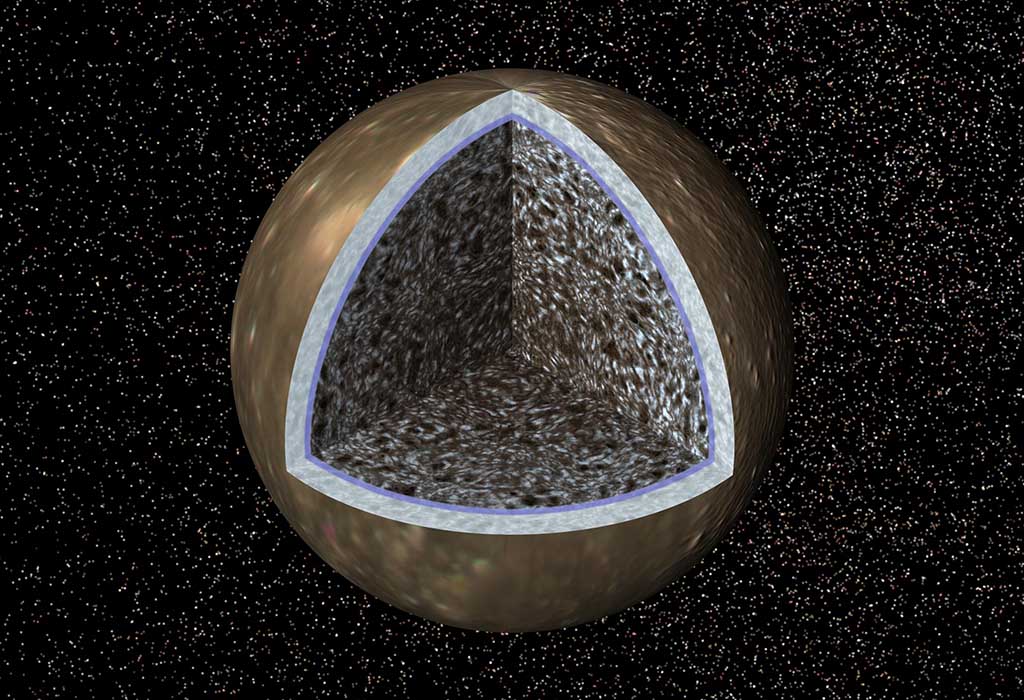Is there life on the Galilean moons of Jupiter?
Although some have speculated that life may be possible within the atmosphere of Jupiter itself, more likely candidates are the four icy Galilean moons around it. All four moons are extremely cold, and all have thin atmospheres. Nevertheless, they are all tantalising prospects for finding life beyond Earth.

Io
Io is the closest moon to Jupiter, and a veritable hotspot of volcanic activity. Io’s vigorous dynamic activity comes from something called ‘tidal flexing’. Gravitational pulls from Jupiter’s next two moons, Europa and Ganymede, have tugged Io’s orbit into an oval shape. As Io orbits around Jupiter, its oval-shaped orbit means that Jupiter’s extremely strong gravitational pull is stronger at some times during the orbital path, and weaker at others.
The uneven gravitational pull causes the moon to bulge, then bounce back, causing friction inside Io’s interior, driving its intense volcanic activity. Io is the most volcanically active moon in our solar system, with plumes of material reaching up to 300 kilometres from the surface, spewing out masses of what is possibly either silicate rock or sulfur-rich material into space.
However, for all its tidal heating, the surface of Io is around –143 °C. And although Io’s atmosphere is one of the thickest of all the moons in the solar system, it’s still relatively thin—Earth’s atmosphere is around 200 million times denser. Io is also bathed in huge amounts of radiation from Jupiter and there’s no evidence of any water. However, scientists believe that water may have been present on Io early in its formation, and there is a possibility that some form of life may exist underground.

Europa
Underneath a spiky, icy crust, Europa is thought to have a huge, planet-wide liquid water ocean. All life on Earth requires liquid water, and so what better place to look than an ocean? Furthermore, Europa’s ocean would be protected from Jupiter’s radiation, and rather warm. It would be not much below freezing temperature, compared with the chilly –160 °C on the surface.
NASA’s Galileo mission returned lots of images of Europa’s surface that clearly show some extensional features and ridges on the icy crust, suggesting that convection is occurring beneath it. This sort of activity is a plus for life. It was also the Galileo mission that noticed how Europa seems to alter Jupiter’s magnetic field as it moves through it, which is the best evidence we have yet of a salty ocean under the moon’s icy crust.
The Hubble Space Telescope has also taken snaps of something that could be a geyser of water, erupting around 200 kilometres above the surface of Europa—and it looks like Galileo even got sprayed by such a geyser during a 1997 flyby. Future missions, such as the planned Europa Mission, may be able to take samples from these plumes of water and test them for the presence of microbial life.
Ganymede
Ganymede is Jupiter’s largest moon, made of roughly equal amounts of rock and ice. Other than a very thin atomic oxygen atmosphere, there’s no breathable air. Ganymede is pretty special—it’s the only moon in our solar system to have its very own magnetic field, probably caused by convection in its iron-rich liquid core.
The magnetic field causes auroras, which are affected by Jupiter’s magnetic field. Using the Hubble Telescope, scientists studying how those auroras changed with shifts in Jupiter’s magnetic field surmised that Ganymede has an ocean of salty water beneath its icy surface. Ganymede’s auroras are ‘rocked’ by changes in Jupiter’s magnetic field. However, they don’t appear to rock as much as they should, and so scientists have postulated that it is the presence of a salty ocean that creates a second magnetic field that counteracts Jupiter’s. This creates ‘magnetic friction’ that suppresses the rocking of Ganymede’s auroras.

The ocean is thought to be around 100 kilometres deep, beneath around 150 kilometres of ice on Ganymede’s surface. Another idea is that Ganymede’s interior is made from layers of salty liquid ocean interspersed with layers of ice, which result from the way salty water and ice behave under extreme pressure. Could these oceans be full of oceanic Ganymedian critters?
Callisto
Of the Galilean moons, Callisto is the furthest from Jupiter. Callisto has a very thin atmosphere, is thought to contain an ocean, and is therefore another possible contender for life beyond Earth. However, its distance from Jupiter means it doesn’t experience such a strong gravitational pull, so it’s not as geologically active as the other Galilean moons of Io and Europa. On the flip side, this also means that it’s sufficiently far away to not be blasted by (generally life-unfriendly) radiation from Jupiter.

Could Jupiter and its icy moons harbour the conditions required for life to exist? We still can’t say for sure—but we still have much to learn.





